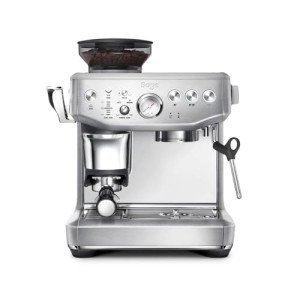The Rise of Home Espresso Machines: A Comprehensive Guide
As coffee lovers continue to seek fresh and delicious brews in the house, the appeal of home espresso machines has actually risen recently. No longer just the domain of coffee shops and coffee bar, these machines empower people to craft barista-quality espresso drinks from the comfort of their kitchens. This post will check out the different kinds of home espresso machines, their functions, and considerations for choosing the right one. In addition, it will offer a choice of FAQs to help potential purchasers make informed choices.
Kinds Of Home Espresso Machines
Home espresso machines can be categorized into numerous classifications based on their systems and user-friendliness. Each type has its distinct features, pros, and cons.
| Type | Description | Pros | Cons |
|---|---|---|---|
| Manual Espresso Machines | Needs the user to by hand manage the developing procedure, involving techniques like pulling a lever to produce pressure. | - Complete control over brewing process - Compact design | - Requires ability and practice - Time-consuming |
| Semi-Automatic Machines | Machine automates water circulation and pressure, however the user still controls the dosing and duration of the developing process. | - Balance of automation and control - Versatile | - Learning curve for refining strategies |
| Completely Automatic Machines | Automates the entire brewing procedure, from grinding to brewing, frequently with programmable settings for tailored beverages. | - Extremely user-friendly - Quick and hassle-free | - Less control over the brewing procedure - Higher cost point |
| Pill or Pod Machines | Utilizes pre-packaged espresso pills or pods to develop coffee quickly and quickly. | - Extremely simple to use - Minimal clean-up | - Limited flavor variety - More pricey per cup than ground coffee |
| Super-Automatic Machines | Combines functions of fully automatic machines with built-in mills, permitting users to brew whole bean espresso and milk-based beverages with one touch. | - All-in-one benefit - Ideal for milk-based beverages | - Often the most expensive - Can be bulky |
Features to Consider
When picking a home espresso machine, potential buyers must think about the following functions to guarantee they select a machine that fulfills their needs:
Grinder Type:
- Built-in grinders can offer fresher premises however may need more maintenance.
- Different mills allow for more customization of grind size.
Pressure:
- Look for machines that produce at least 9 bars of pressure, which is optimum for brewing espresso.
Water Temperature Control:
- Machines with adjustable temperature settings allow for much better extraction of flavor from beans.
Milk Frothing Options:
- Consider whether you want a manual steam wand for frothing or an automatic milk frother for benefit.
Reduce of Cleaning:
- Machines with removable parts and self-cleaning functions significantly decrease cleanup time.
Size and Design:
- Ensure the machine fits comfortably in your kitchen and lines up with your visual preferences.
Budget:
- Set a budget before beginning your search, as prices can range significantly from affordable designs to high-end machines.
Advantages of Home Espresso Machines
Owning a home espresso machine offers many advantages:
- Cost-Effective: Over time, developing espresso at home can save coffee lovers money compared to regular café visits.
- Customization: Users can explore different beans, grind sizes, and brewing methods to discover their best cup.
- Convenience: The capability to brew espresso any time gets rid of the requirement to head out to a coffee shop, especially helpful during late nights or mornings.
- Quality Control: With a home machine, individuals have complete control over the quality of components and brewing procedures.
Downsides of Home Espresso Machines
However, there are some drawbacks to consider:
- Initial Investment: High-quality espresso machines can be expensive, requiring a considerable upfront investment.
- Knowing Curve: Mastering the art of espresso brewing can require time and practice, which might be daunting for newbies.
- Maintenance: Like any appliance, espresso machines require routine cleansing and maintenance to guarantee ideal performance.
Frequently asked questions
1. What is the best kind of home espresso machine for beginners?
Response: For novices, a semi-automatic machine is typically suggested as it offers a balance in between control and automation, enabling you to discover the essentials without overwhelming intricacy.
2. Just how see it here should I invest on a home espresso machine?
Response: Entry-level machines can begin around ₤ 100 to ₤ 300, while higher-end models can range from ₤ 500 to over ₤ 2000. It's vital to set a budget based upon your anticipated use and desired functions.
3. Do I require a separate grinder?
Response: While some espresso machines include integrated mills, purchasing a separate grinder permits for greater customization and guarantees much better quality grounds.
4. How often should I clean my espresso machine?
Response: Cleaning frequency can vary by machine type, however it's normally advised to clean the machine after each use and carry out deep cleanings weekly or month-to-month, depending on use.
5. Can I make milk-based beverages with any espresso machine?
Response: Not all machines include milk frothing abilities. If you take pleasure in drinks like lattes or cappuccinos, try to find a machine with a steam wand or automatic frother.
Home espresso machines are changing the way coffee aficionados enjoy their precious brews. With numerous types and advanced functions offered in the market, there is something for everyone. Whether it's the joy of producing special recipes or merely appreciating the best shot of espresso, investing in a home espresso machine can enhance both the coffee-drinking experience and the lifestyle for coffee enthusiasts everywhere. Just like any financial investment, it is essential to weigh the benefits against the possible disadvantages and select a machine that flawlessly fits both your lifestyle and choices.

